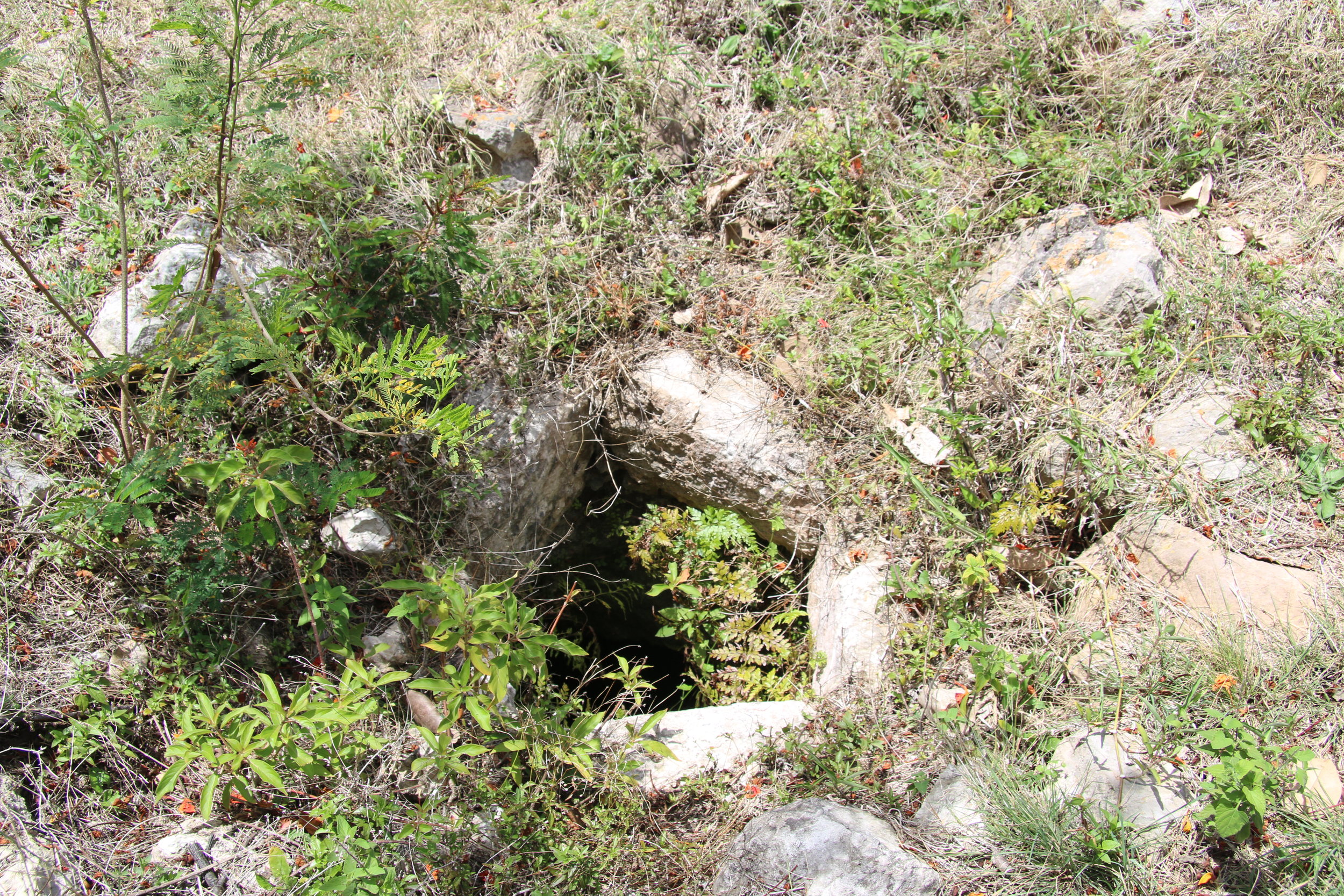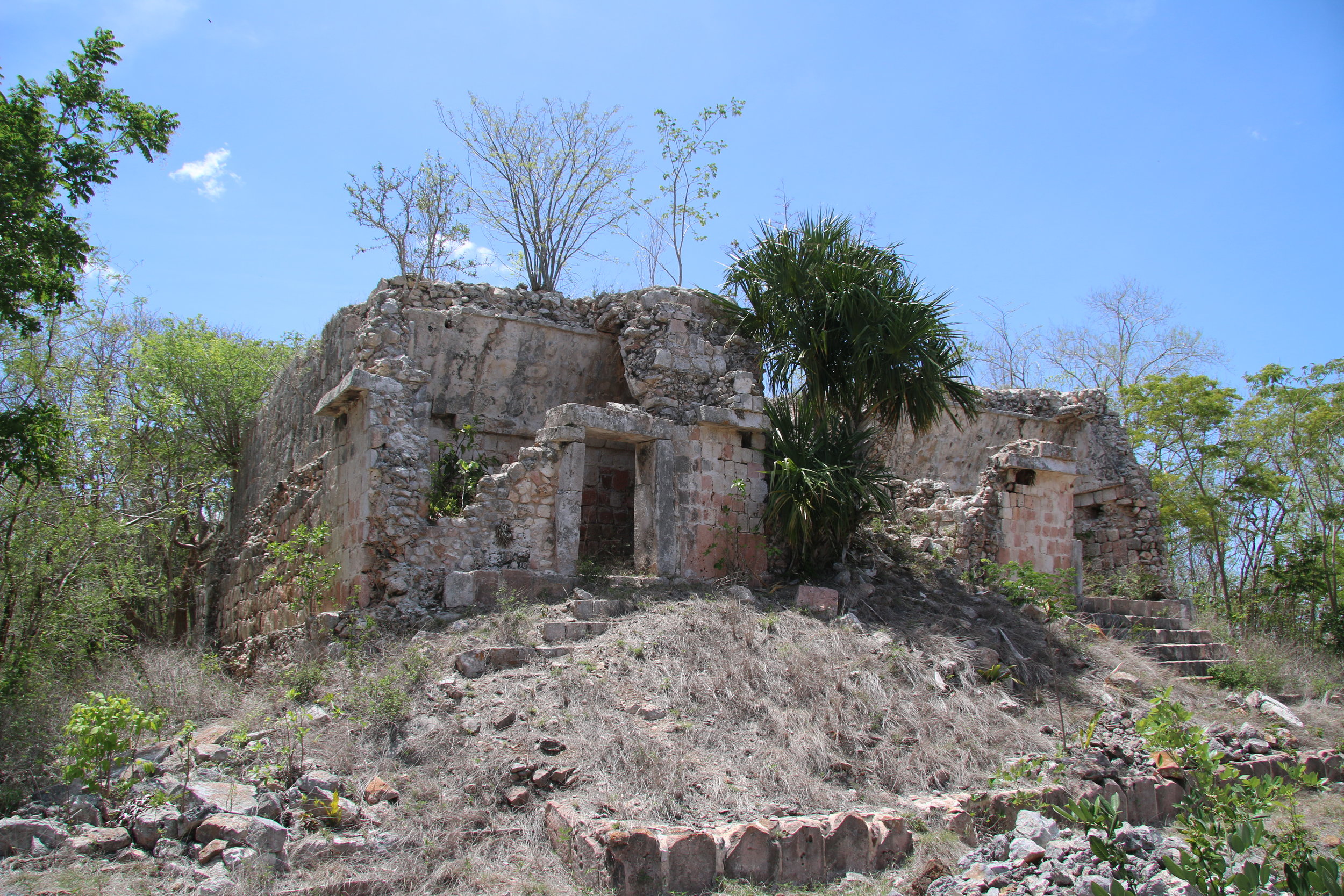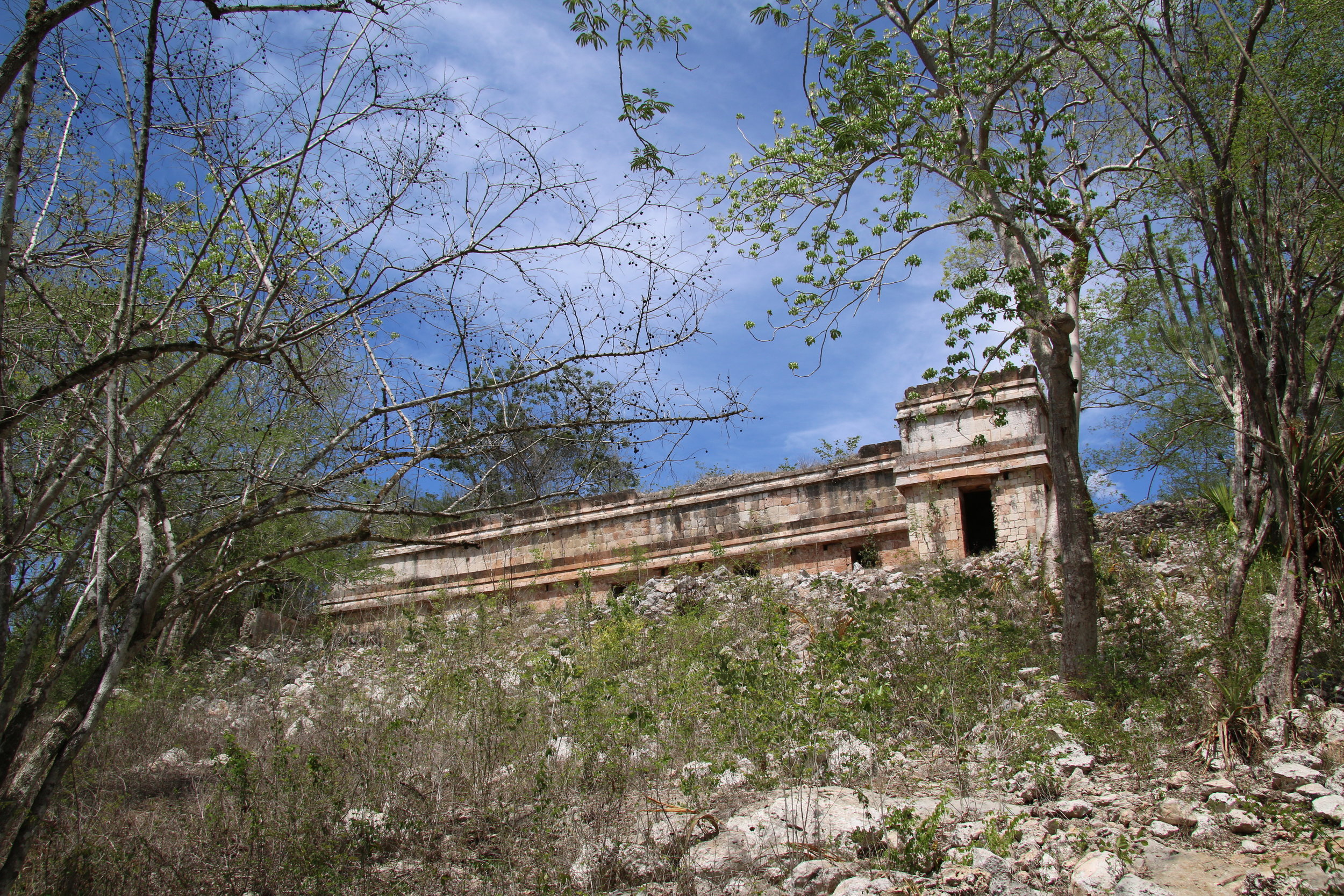…wild lunch in Akil Yucatan…
The Church of Hoctun in June
Los Chocantes Caves - Revisited
In my previous article on Tekax I mentioned the Chocantes caves and described my brief visit there with Pedro, the owner of the property and the most chill guide ever.
On this latest visit, with a group of Lawson’s guides, we took the entire tour, crawling inside the caves to see the magnificent crystal formations (hence its name Gruta de los Cristales) and cruising down the hillside on the Yucatans longest zip line (150 meters in 14 seconds).
Ideally, you would want to set aside 4 hours or so to visit the site completely and thoroughly. Again, like at Chacmultun, bring a cooler with lots of ice, Gatorades and water - you will need it. And while this tour can be done in a day from Merida, I would highly recommend an overnight, either in Akil, or as we did on this occasion (six people) in a lovely airbnb property in nearby Tzucacab.
Pedro and his staff are friendly, professional and the operation is supervised and safe. Guides in front and back keep an eye on the group so no one falls behind during the hiking and caving. All zip line activities are professional and done with the latest equipment so no one goes flying off into the underbrush at a 100 miles per hour.
Contact us at lawsonsyucatan@gmail.com to set up a private tour for your group to this area including lodging and meals along with the many activities.
Enjoy the photos!
Tekax - History, Nature and Mayan Archeological Sites
Tekax, officialy known as Tekax de Alvaro Obregon, after the Mexican revolutionary politician and one-time president, is next door to Akil and very near Oxcutzcab, making it another destination for those who happen to find themselves in the ‘citrus belt’ of the Yucatan.
Vegetation abounds on the outskirts, lush green and varied. Fields and orchards attest to the rich soil in the area. The town itself, a two hour drive from Merida, is historically interesting and relevant as well. Definitely worth at least one overnight stay while you are exploring the area.
You will see that the town is very colorful, with lots of colonial era constructions including the famous ‘casa de tres pisos’ a three story home owned by a wealthy property owner and the site of bloodshed during the Caste War. In fact, you can see the marks on the dilapidated wooden front door, apparently made by Mayan machetes as they tried to gain entrance to this imposing house. The place is still owned by descendants of the last owners and since it is such a huge undertaking to maintain and perhaps restore it, you might very well be able to purchase this and sink a ton of money into it.
The main square central park area, featuring a wrought iron fence, is one of two such parks in the Yucatan, the other being in Valladolid. There has been a great effort made to landscape and plant, as well as providing citizens and visitors with places to sit and contemplate life while listening to piped in music, often classical. On the morning when I was there last, Vivaldi’s Four Seasons (Spring) was wafting over the area.
Nearby is the impressive Chacmultun Mayan site, and there are a gazillion caves to explore (with a guide, por favor) the most famous of which are Sartenejas and Chocantes. The nearest known cenote is San Mateo, near the town of Peto, a bit of a drive from Tekax.
Enjoy the photos! (click to enlarge and see them completely)
Chacmultun: the last site on the Puuc Route
At the southern end of the Puuc route, which begins in Uxmal and extends through Kabah, Labna, Sayil and other less-known and some completely unrestored settlements still hiding in the jungle, there sits Chacmultun. Chacmultun means hill of red rock, which is the original name its discoverers gave it as the stone quarries in the region produce red limestone, as opposed to the whiter version in the northern part of the Yucatan peninsula. In fact, many Mayan sites are known by names that probably have nothing to do with their original names; given that there is no text to consult, no stellae to interpret, no record at all. That big hill in Coba? We’ll just call it Nohoch Mul. Big Hill. OK.
Back to Chacmultun. This site is a collection of three or four settlements, with Puuc-style temples and mounds, clustered around a small, fertile valley filled with rich red earth which would have been the agricultural production center at the time (it still is used for farming now).
You will see partially restored buildings complete with friezes, cornices and decorative elements, some of which are cracked, others still intact. You can visit and clamber around most of the site, and will notice some very lame efforts by the INAH to “preserve” some of what is there. Some of the restoration is also quite miserable, the chultun in the main part of Chacmultun proper being a prime example (see photo). In one of the buildings there are paintings on the wall and to preserve them the specialists at INAH have simply plastered over them. To protect stellae on the ground, depicting hieroglyphs and carvings, they have been flipped over so the sun and rain don’t erode them. Very high tech. Parts of the structures have crumbled into ruinous but very recognizable chunks, which would not be that difficult to restore, if there were some will on the part of the folks in charge.
The view from one of the areas visited - Xet Pol I believe - a long walk on a small road through the fertile field and up a small hill, is truly stunning. You feel you can see to the end of the world from there, and the breeze under a shady tree is a most welcome sensation.
The site is stunning and highly recommended if you have any interest in the history of the Mayans in this area. My guide said that the area was populated from the year 300 BC to just before the Spanish arrived at the end of the 1400’s and commercially was important as much of the paper and exotic bird feathers came from the area.
Take a Guide and take Water on Ice
You can hire a guide locally (none at the site, check in Tekax tourism office) and you will get so much more out of the experience than if you go alone. Once at the site, note that you will be required to pay an entry fee of about 50 pesos per person and that there is NO water of any kind for visitors, which included bathroom facilities. None. So make sure you have taken care of your bathroom needs before getting there. When you finish the tour, be aware there is nothing hydrating available, so have that with you in your ice box in the air conditioned vehicle.
There is a lot of walking and if you go in June, as I did very recently, the 2-3 hour visit under a blazing summer sun which feels relentless will make your head explode. That cooler with water, Gatorade or similar and plenty of ice, a vehicle with air conditioning; these will make the trip a far better experience and possibly save you from getting heat stroke.
Lawson’s Original Yucatan Excursions can design a custom and private excursion to the area, which I suggest should be a two day trip with an overnight in Tekax. This way you can enjoy the site on one day, relax in the evening and enjoy the town of Tekax, and the next day hit some caves before returning to Merida. Contact us at lawsonsyucatan@gmail.com for more info or to book this trip.
Photos



























































